Uffizi Gallery Florence
Florence's Most Visited Museum
Full of Renaissance Treasures
The Uffizi Gallery in Florence is a must if you’re an art appreciator.
I’ve been to this world-renown Florence museum many times but the last time I went, it was with writing this page in mind.
Here’s why:
I don’t want you to come out of this great museum disappointed, and that might happen if you
If you already know about what there is to see in the Uffizi and you just want some practical tips like booking advice, just click on the link below.
essential Uffizi Gallery survival tipsEveryone else, let’s start with some faqs.
What does Uffizi mean?
Uffizi is Italian for ‘offices’.
The grand duke of Tuscany, Cosimo de Medici, originally had the building built for the administrative offices of Florence in about 1560.
What's in the Uffizi Gallery?
The museum has paintings spanning from the 12th century to the 17th century.
There's a particular emphasis on renaissance works, many of which originally belonged to the private collection of the Medici family (rulers of Florence during the renaissance age).
But that’s not it.
In the past the Uffizi was more known as a statue gallery than a painting gallery. You can see statues coming from ancient Rome that were bought and brought to Florence by the Medici.
Today most of these statues line the three corridors of the upper floor of the museum and are interspersed with busts and portraits of the Medici family through the generations.
The Medici Venus is one of the most famous of these statutes (see pic above right).
How Long Do I Need to See the Uffizi Gallery?
A full visit will probably take 3 hours, a quicker run through of all the rooms, 2 hours, and if you just go straight to the rooms with the main pieces you want to see, just over an hour.
Will I See Lots of Michelangelo and Leonardo Works?
My aunt recently came to Florence and when I asked her if she had enjoyed her visit to the Uffizi she said ‘Great, but I didn’t see many Michelangelo’s or Leonardo’s….’.
Everyone associates Michelangelo and Da Vinci with Florence, and rightly so since they came from here and got their professional ‘breaks’ here.
So, everyone also assumes that Florence’s biggest museum will have walls full of their works.
It’s not like that though.
There is exactly one Michelangelo and three Leonardo paintings in all of the Uffizi Gallery.
Actually, I should say two and a half for Leonardo since one painting, the Baptism of Christ Leonardo painted together with his teacher, Verrocchio.
This is because Leonardo had many painting commissions outside of Florence and spent a lot of his working life in other cities. As for Michelangelo, he much preferred sculpting to painting and the painting that he did do was mostly done on walls in the form of frescoes like the Sistine Chapel.
However, the one Michelangelo which you can see, is considered the most significant and intriguing painting of the 16th century: the Tondo Doni (more on this below).
How Is the Museum Set Up?
Paintings are displayed in chronological order and according to painting style and influences.
What Are Some of the Most Admired Pieces in the Uffizi Gallery?
Michelangelo’s Tondo Doni, the Holy Family (circa 1507).
Tondo means ‘round’, as the painting is round in shape, and Doni is the surname of the man who commissioned the work, Agnolo Doni a wealthy merchant in Florence.
The story goes that Michelangelo sent the painting to its commissioner with the bill of 70 ducats but Mr. Doni thought that was too much and offered only 40 (artists – no matter how famous – were considered manual laborers back then).
Michelangelo responded by doubling the bill to 140 ducats!
The painting is considered enigmatic because nobody has resolved the question of whether it is Mary who is handing the baby Jesus to Joseph or, on the contrary, it is Joseph who is handing the infant to his mother.
This is the only free-standing painting by Michelangelo which can be 100% attributed to the Florentine master (without the hand of any painter’s assistants) and whose authorship has never been questioned.
Leonardo Da Vinci, the Adoration of the Magi.
Commissioned by monks in 1481 for their monastery just outside Florence, Leonardo started but never finished the job (da Vinci was known for being a great procrastinator his whole life).
In a way this painting is interesting for its unfinishedness.
You can see how Leonardo went about his work with this first draft which resembles a rough sketch which has just begun to be brought to life with the addition of the paints.
Sandro Botticelli, Primavera (Spring) and la Nascita di Venere (the Birth of Venus).
These two paintings are what so many people come to the Uffizi to see.
Botticelli was a friend of the Medici family who commissioned works from the painter over a 20 year span for various events, both political and personal.
Botticelli’s Primavera was commissioned by Lorenzo di Pierfrancesco de Medici (a cousin of Lorenzo the Magnificent, Lord of Florence) and along with the Birth of Venus originally hung in a Medici villa near Florence.
Although nobody is 100% sure about which painting was done first or exactly who la Nascita di Venere was painted for, it is generally thought that the two paintings go back to about the same period (about 1480).
There are many likenesses between the two, mainly the use of the same characters (Venus, the god of wind Zephyrus, and Flora the spring nymph) and the fact that both works represent an idealized vision of love and beauty.
Caravaggio's il Bacco (Bacchus, the god of wine - circa 1597)
Bacchus was a gift to Ferdinando I de Medici, Duke of Florence, from cardinal Del Monte, Caravaggio’s patron.
Many art critics believe that Caravaggio used himself as a model for the painting in which a life of pleasures is illustrated through the wine, food and the undeniable sensual look and manner of the painting's subject.
Pay attention to the fruit, which is over ripe and rotten (a reference to what too much of the ‘good life’ can lead to?).
Caravaggio’s Medusa is another painting at the Uffizi Gallery that you will surely recognize.
In Greek mythology Medusa was a snake-haired woman who was able to turn a person to stone just by looking at them. The painting shows Medusa defeated (decapitated to be exact).
Painted in 1597 it is actually not a painting on a canvas but on a round shield.
Piero della Francesca’s famous side-view painting of the Duke of Urbino, Federico da Montefeltro, and his wife.
This portrait is one of the most famous pieces in the Uffizi Gallery and one of the most reproduced of all renaissance paintings.
Montefeltro was one of the most heralded Italian condottieri (battle leaders) as well as renaissance man who contributed greatly to the spreading of culture and democracy.
Known as a fearless fighter, he was painted in profile because he had lost his right eye in a battle.
The work goes back to about 1475 and is the Tuscan artist Piero della Francesca's most famous painting.
Titian's Venus
Room 28 is dedicated to the Venetian painter and includes his famous ‘Venus from Urbino’ dated 1538, widely considered one of the most erotic paintings of all time.
It’s hard to take your eyes off the young woman lying naked on the bed (especially because she stares back at you too!) but look in the background and notice her servants busily looking through a chest for some clothes to cover her with.
A visit to the Uffizi Gallery is also a wonderful occasion to get to know important painters who influenced the renaissance which was to come such as Giotto (below) and Cimabue.
These two artists go back to about 1300 and were among the first to experiment with three dimensional perspectives in painting as well as trying to give human characteristics to the figures in the works through facial expressions and the idea of movement.
Several rooms are dedicated to these artists at the start of the visit.
Another artist worth mentioning but who you might not be familiar with is Filippo Lippi (room 8).
Lippi was one of the first painters who was taken under the wings and supported by the Medici family in about 1450.
Although originally a monk, Lippi preferred more earthly pleasures and fell in love with a nun who he eventually had two children with (they both had to give up their vows of course!).
Lippi was also the teacher of the young Botticelli who was an apprentice in Lippi's workshop in Florence.
Lippi’s lack of enthusiasm for the church’s doctrines did not come out in his religious paintings though which are some of the most tender and moving works in the Uffizi Gallery.
His light touch and graceful sweet images of the Madonna, baby Jesus and the Magi are very much worth spending some time with.
What About non-Italian Artists?
The Uffizi Gallery has recently refurbished a large part of the museum setting up elegant new rooms dedicated to foreign painters.
These are called the Blue Rooms are are dedicated to Spanish, French, Flemish and Dutch artists.
The collection includes works by the Spanish greats El Greco, Goya and Velazquez, the Dutch master Rembrandt including two of his many self-portraits (above), and the Flemish geniuses Rubens and Van Dyck.
The portrait below of Isabella Brandt is one Rubens piece that you can see at the Uffizi Gallery.
This work is dated 1626 and depicts the first wife of Rubens shortly before she died.
The painter knew that his wife was ill and created this last portrait of her as an homage.
the Uffizi Gallery Florence - Survival Tips
How do I avoid long lines?
- get a Florence card for museums
- come to Florence in low season (November - February). If you can do this all your troubles will be solved as you won’t have lines to deal with or need to pre-book anything.
- alternatively, be the early bird. The museum opens at 8:15 so if you are there at 8:00 or even 7:45 (in high season – the summer - the earlier the better) you should get in just as they open. This option is good also because you avoid paying booking fees and having to pick up tickets. Also, once you see the museum you still have the whole day ahead of you for exploring Florence!
- alternatively, pre-book tickets for a specific day/time (see below).
How do I book tickets?
The least expensive way to book is through the official site of the Uffizi Gallery.
Through the official site you pay a small booking fee of €4.
So the museum entrance fee of €6.50 (if there happens to be an exhibit on it can go to €11 or €12) plus the €4 booking fee is all you should spend this way.
Free entrance: anyone under 18 and disabled visitors plus one accompanying person
Where: right off Piazza della Signoria
Phone: 055 23 88 683
From the official site you can book in two ways:
By phoning you don’t pay or leave a credit card number but just get a code you will use to redeem your tickets at the museum.
It’s that easy!
Once booked, you need to do this on the day of your visit:
- go to door number three at the Uffizi Gallery 15 minutes before your booked time (don’t be late, but don’t be too early either – you won’t be able to get your tickets). With your back to Palazzo Vecchio and you looking at the Uffizi plaza, door 3 is on the right hand side sidewalk under the arches.
- from door 3 you get your ticket (pay in cash – no credit cards last I heard…) and then go to door one (on the other side across the plaza) where you wait in the priority entry line.
So you see, with pre-booking there’s still a bit of waiting to do, at door 3 and then door 1, which, depending on the crowds and organizing abilities of the workers that day could turn into a bit of a wait.
What else do I need to know?
- NO beverages OR bottles are allowed in the Uffizi Gallery. They’ll make you empty out any that you have in your bag AND throw away the bottle so just don’t bring any (there’s a bar at the end of the 2nd floor, over-priced of course but there’s a fabulous view of Florence's Duomo and Palazzo Vecchio from the terrace)
- Any bulky items must be checked (umbrellas, biggish backpacks, etc) at the cloakroom. This is free. If you don’t do this, you’ll be sent back by the ticket takers just as you’re about to go in and you might lose your place in this line!
- There are toilets on the basement level – use them before you start your visit. The next rest rooms will be a long way off (at the end of the long second floor – believe me, you don’t want to go back to use the toilets)
- The visit starts on the second floor. There’s a ‘Monumental Staircase’ to get there which is splendid to look at but a fatiguing way up (4 flights). I prefer the elevator since there’s plenty of walking ahead in the museum.
More...
If you’ve read this whole page, then you’ve done your preparatory homework and hopefully your visit to the Uffizi Gallery will be more satisfying, enjoyable and distress-free.
Of course...the more you know, the more you will enjoy the museum.
Here are some great ways to find out even more:
- go into the museum book shop before your visit and get the official museum guide book ‘the Gallery, the official guide all of the works’ by Giunti editor. Read up some days before or just read as you see.
- there are audio guides too that you can rent (but they don’t include information about as many paintings as the official guide book does).
- alternatively (and for free!), do some more preparatory work on the Net. The official site has a fabulous 'virtual tour' that allows you to visit each room and read about the works. Dedicate an hour to this before coming to Florence and you’ll be even more excited to go the Uffizi Gallery!
- the Uffizi is also one of the choice museums included in the Google Art Project. This project brings art to the masses via the Internet through high quality digital images and videos and is another way to learn more before your visit to Florence. Here's an example of what this project offers, a video about Botticelli's the Birth of Venus. Take advantage of this wonderful tool and be an expert before you step foot into the halls.
So what's the final judgement on the Uffizi Gallery?
Needless to say, I find the Uffizi Gallery worth visiting.
The only criticism that I can offer about this great Florence museum is that there is a very large amount of biblical themed art work which – unless you’re an art student or connoisseur – could seem repetitive.
This is because churches and monasteries were some of the most common patrons of art, commissioning works for the walls of Florence cathedrals.
A lot of this work then came to the museum as the result of the suppression of religious institutions.
Often it is the ‘pagan’ (as the Italians call them!) works that pack the most emotional punch like Botticelli’s the Birth of Venus and Spring, Caravaggio’s Bacchus and Medusa and Titan’s Venus and Flora.
And, as a Florence enthusiast, I also love all the works depicting famous Florentines where you get to see portraits by Bronzino – the official painter of the Medici’s - as well as a fabulous painting by Raphael of the Medici sons who both became popes and also many busts of the Medici clan and other Florentine governors.
But that’s me – now what about you?
Which Uffizi Gallery masterpieces are going to be your favorite?
Want to know even more about the Uffizi Gallery?
Have any of your questions been left unanswered?
Don't be shy - write FlorenceWebGuide with your Uffizi Gallery query!
What Other Visitors Have Asked
Click below to see contributions from other visitors to this page...
Stairs Not rated yet
How many steps in the Uffizi Gallery?
Well, I don't know the exact number but there are a lot to get up there, and they are the hard-to-climb type too …
Booking tickets when I get there Not rated yet
Will be in Florence on September 3rd for 2 weeks and wondered if I could get a ticket for the second week by going to the Uffizi,say on the 4th or 5th, …
Vasari Corridor Not rated yet
Hello, Thank you for your very helpful website.My husband and I will be spending 10 days in Florence in mid-September. The Uffizi is first on our places …
Painting of Peter Paul Rubens Art Studio Not rated yet
When were at the Uffizi, my husband was enthralled by a painting attributed to the Rubens school of Ruben's art studio. We are trying to find a print …
Photos in the museum Not rated yet
Hello and thank you for giving so much information - I'm really looking forward to my visit to the Uffizi.
I'm wondering if it's allowed to take pictures …
Related pages you might be interested in:
- the Accademia Gallery - home to Michelangelo's David
- the Bargello museum - the best of Renaissance sculpture
- the Statue of David - find out about all the famous Davids in Florence
- Quirky Florence museums - lesser known yet highly interesting museums you may not know about
If you like the content of this page, please share! Click the button below.
News Flash!
Great News....Photo taking is now allowed in Florence Museums!
- Florence Steak
- Things To Do
- Florence Museums chart
- Florence tourist passes
- Events by Month
- San Niccolo Gate Tower
- Florence Cathedral
- Florence Baptistery
- Giotto's Bell Tower
- Florence Dome
- Santa Reparata archaeological site
- Opera del Duomo Museum
- Florence Duomo Complex
- Medici Chapel
- Palazzo Medici Riccardi
- Scoppio del Carro
- Santa Croce Florence
- exhibits in Florence
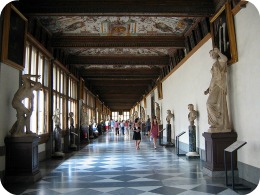
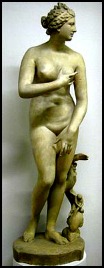
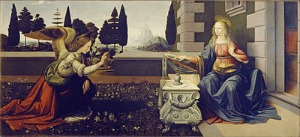
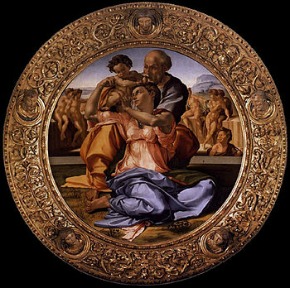
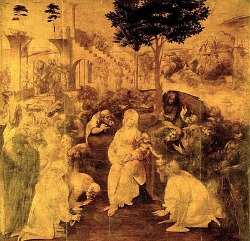
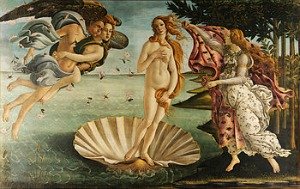
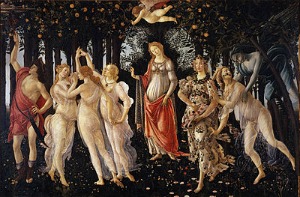
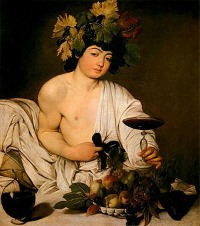
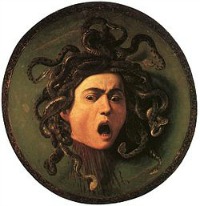
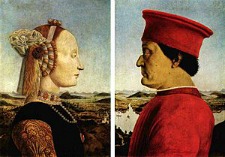
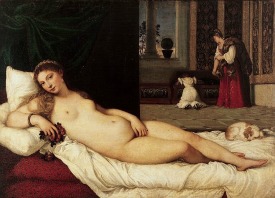
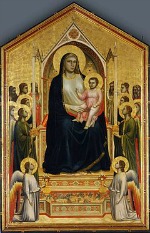
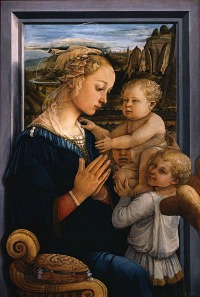
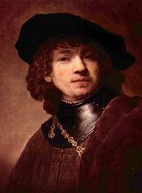
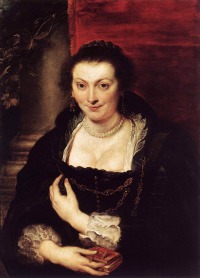

New! Comments
Have your say about what you just read! Leave me a comment in the box below.